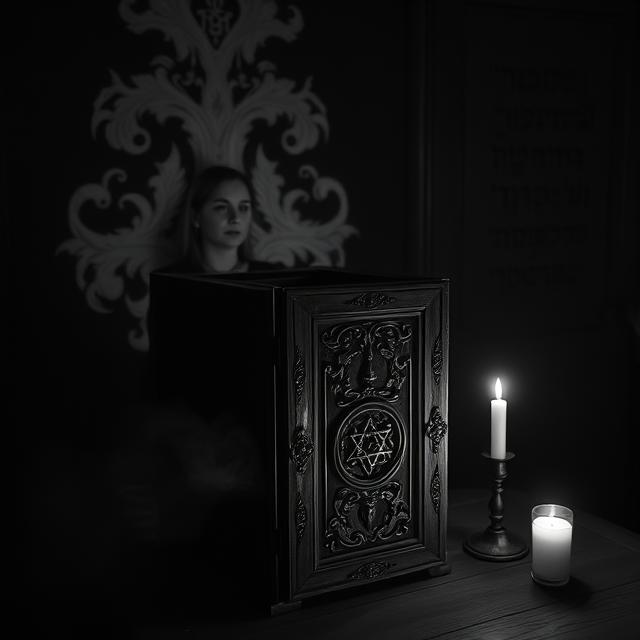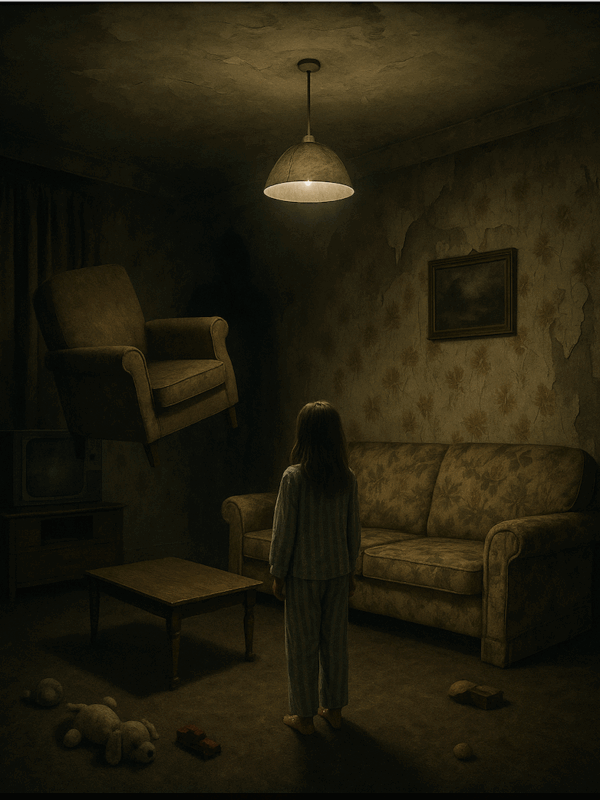In the world of haunted artifacts, few objects have inspired as much fear, fascination, and controversy as the Dybbuk Box.
What began as an antique wine cabinet sold on eBay in the early 2000s would become the center of a supernatural storm, inspiring books, documentaries, and even a Hollywood horror film.
The box was said to be cursed, haunted by a malevolent spirit from Jewish folklore known as a dybbuk—a restless, often vengeful soul that refuses to pass on.
But was the Dybbuk Box truly cursed? Or did belief itself unleash something that couldn’t be put back?
What Is a Dybbuk?
In Jewish mysticism, a dybbuk is a disembodied human spirit that latches onto the living, usually due to unfinished business or deep emotional trauma. The term comes from the Hebrew word “dāḇaq,” meaning “to cling.”
Dybbuks are said to cause illness, misfortune, and erratic behavior in their hosts. They don’t haunt places—they haunt people.
To rid someone of a dybbuk often requires a rabbinical exorcism. Unlike a ghost, the dybbuk is not neutral. It is here to torment.
Which is what makes the Dybbuk Box story so unsettling.
The Box Appears
In 2001, an antique buyer named Kevin Mannis purchased a wooden wine cabinet at a Portland, Oregon estate sale. The seller, the granddaughter of a Holocaust survivor, warned him the box had been kept locked and hidden. Her grandmother had referred to it as a dybbuk box and asked that it never be opened.
Mannis, naturally, opened it.
Inside, he found strange items:
- A lock of blonde hair tied with string
- A lock of dark hair also bound
- A small granite sculpture with Hebrew engravings
- A dried rosebud
- A golden goblet
- Two pennies dated 1925 and 1928
- A candle holder with octopus-like legs
That’s when the nightmare began.
The Haunting
Shortly after bringing the box home, Mannis claimed to experience terrifying phenomena:
- His lights would explode or flicker
- Strange, ammonia-like smells would flood the house
- His hair began falling out in clumps
- He and visitors had vivid, identical nightmares involving a horrible old woman
Even more disturbing, everyone who came into contact with the box suffered misfortune. One friend suffered a stroke. Another became gravely ill. Mannis’s own mother had a stroke the very same day he gave her the box as a gift.
Panic set in. Mannis tried to sell or give away the box multiple times, but it always seemed to return—physically or through disturbing dreams.
Eventually, he listed it on eBay.
The legend was just beginning.
The Box Goes Viral
The eBay listing described the haunting in detail and went viral, capturing the attention of paranormal enthusiasts around the world.
The box was purchased by student Jason Haxton, who also reported violent reactions:
- Coughing blood
- Skin lesions
- Visions of shadow people
- Waking up choking or unable to breathe
Haxton, the director of a medical museum, eventually had the box sealed in a protective container lined with gold leaf and placed it underground, hoping to neutralize the supposed curse.
Still, stories continued to circulate. The Dybbuk Box had become a myth, a meme, and for some—a real danger.
Hollywood and Hysteria
In 2012, the Dybbuk Box inspired the film The Possession, produced by Sam Raimi. During production, cast and crew reported strange activity, including unexplained technical failures and on-set injuries.
After the film’s release, renewed public interest in the box led to even more dramatic claims—some believable, others bordering on hysteria.
Eventually, the box was acquired by Zak Bagans, host of Ghost Adventures, and displayed in his haunted museum in Las Vegas. Guests and staff have since reported fainting, dizziness, and sudden illness after seeing it.
The box now sits in a glass enclosure, watched by cameras, rarely opened.
And yet, it continues to breathe fear.
The Truth… or a Brilliant Hoax?
Skeptics argue that the Dybbuk Box is an elaborate piece of horror fiction—crafted by Mannis, expanded by others, and kept alive by the internet.
Some of the Hebrew inscriptions were found to be miswritten. The items inside the box appear randomly chosen. Mannis himself once admitted to adding dramatic elements to the eBay listing.
But belief is a powerful force. Whether the box is truly cursed, or whether collective belief has imbued it with a kind of energy, it continues to terrify those who cross its path.
Sometimes it doesn’t matter if the story is true.
Sometimes it’s what you believe that hurts you.
The Dybbuk Box is more than just an antique. It is an idea. A fear passed from person to person, growing in the telling. Whether it houses a spirit, a curse, or simply the shadow of suggestion, its legacy is undeniable.
It may be a hoax. It may be a haunting.
But whatever it is, the Dybbuk Box has become a modern artifact of true fear.
For more cases like this, explore our archive. SinisterArchive.com—where the legends are real.




